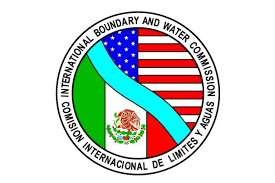

By Elijah Garcia
In February of 1944, the bi-national Water Treaty was formed between the United States and México. Among other things, this treaty was constructed to address issues concerning trash, sediment, storm water, and sewage pollution in the Colorado River, Rio Grande, and Tijuana River watersheds. The federal agency responsible for carrying out the 1944 U.S. - Mexico water treaty, the International Boundary Water Commission (IBWC), continues to implement additional accords – also known as Minutes. Most Minutes have been directed towards the much larger Colorado River and Rio Grande basins.
However, in October 2015, the U.S. and Mexico agreed upon Minute 320. This accord calls for cooperation between the two nations to address pollution and sediment issues in the Tijuana River Valley basin. It prompted the creation of a bi-national stakeholder group, the Binational Core Group (BCG), to organize solutions to these issues. The BCG is led by the IBWC, and its Mexican counterpart, Comisión Internacional de Límites y Agua (CILA). To tackle the diverse issues of the Tijuana River watershed, the BCG created three bi-national working groups that focus on solid waste management, water quality, and sediment control.
The Tijuana River Action Network holds annual clean ups of the Tijuana River Valley. From 2010, volunteers have helped removed over 200 tons of trash and 3,600 tires from the basin. Unfortunately, there still remains countless tons of trash threatening to flood into the estuary and eventually the ocean. The solid waste management group is organizing strategies to eliminate tires and other solid waste from entering the estuary. Co-chairs of the solid waste management group are Francisco Gonzalez Revilla and Cheryl Tieken. They have proposed the formation of a comprehensive solid waste management program for Tijuana and Tecate, which will conduct large scale trash collections within the canyon as well as encourage México to implement its own tire recycling program.
Last year, the Border Field State Park Beach was closed over 200 days, and its neighbor, Imperial Beach, was closed over 70 days. Most of the pollutants enter the Tijuana River Valley during times of heavy rain. Although, CILA constructed a water treatment plant, it was not built to handle excessive water. During heavy rains, the CILA pump stations shuts down due to stormwater exceeding the pump’s limits; flushing all the stormwater and untreated sewage into the Tijuana River Valley basin. The BCG's water quality group is working to improve the efficiency of Tijuana’s treatment plants. Both have proposed an engineering study of CILA’s pump station in order to make informed decisions on upgrades and maintenance. The lack of operational protocol have led to the plant being shut off long after river flow has diminished, prolonging beach closures and health advisories. One solution proposes establishing an immediate notification between treatment plants of operation and alerts when either shuts down. Better protocol and communication will help reduce the sewage flow in the Tijuana River.
Sediments dry out the estuary, eventually killing the salt marsh. This in turn, decreases plant biodiversity and bird habitat. The sediment control group is tasked with reducing the effects of erosion, and protecting the Tijuana River National Estuarine Reserve in Imperial Beach. Solutions range from the creation of a preventative slope and hillside stabilization program to establishing a binational program to remove sediment from the basin.
Minute 320 was a big step in the right direction; it requires cooperation between two nations in order to improve the health of the Tijuana River Watershed and ultimately, our border region beaches and ocean. However, there is still much more to be done.
